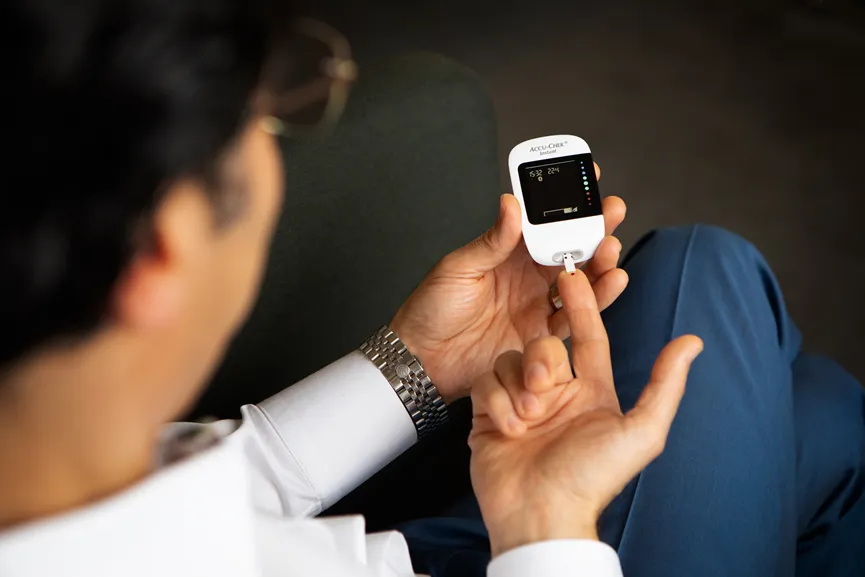Type 2 diabetes
Insulin is a hormone that is needed for the cells to absorb sugar from the blood. Type 2 diabetes means that the body has difficulty keeping the sugar level in the blood low enough, which can cause diseases due to complications in both large and small vessels. The most serious consequence of type 2 diabetes is that the arteries become fatty more quickly, making it harder for the blood to pass through. This can lead to, among other things, heart attacks and strokes. Complications in small blood vessels can, among other things, lead to damage to the retina of the eye, kidney damage and nerve damage that can cause poor sensation in, for example, feet and legs. Type 2 diabetes usually occurs in adulthood.
P-glucose is a blood test that is usually taken through a finger prick and which shows your blood sugar level at the time of sampling. With a blood test that measures HbA1c, the doctor can also see how the blood sugar has been on average over the past two to three months, which is sometimes called a long-term blood sugar test. Treatment for type 2 diabetes focuses on lowering blood sugar levels to avoid complications.
Symptoms
Symptoms of type 2 diabetes are, for example, fatigue, weakness, increased thirst, frequent urges to urinate, blurred vision and/or itching in the abdomen. They usually come on slowly and can sometimes be hard to notice.
Reason
The exact cause of type 2 diabetes is not known, but the risk of developing the disease is often hereditary and is largely influenced by lifestyle factors such as obesity, stress and smoking.
Treatment
The goal of treatment for type 2 diabetes is to lower the blood sugar level in order to avoid complications. It can be done with physical activity and good eating habits, but you usually also need medication. There are a variety of drugs for type 2 diabetes. It is also important to prevent and treat high blood pressure and high blood fats, which means that you sometimes also need medication for this.
Source: 1177
Remote patient monitoring in type 2 diabetes
Type 2 diabetes can be measured using remote patient monitoring. Through remote patient monitoring, you can measure your blood sugar wherever and whenever it suits you.
You get access to a Bluetooth-connected blood glucose meter that you pair with a mobile app. When you measure your blood sugar, the values are automatically entered into the app. There you can follow the values over time through graphs and tables. If your blood sugar is abnormal, i.e. too high or low in relation to set limit values, your caregiver will receive a notification about this and can contact you for possible measures.
By detecting too high or too low blood sugar values in time and correcting them, the risk of both quick and slow complications is reduced. In the case of type 2 diabetes, it is also important to prevent and treat high blood pressure and high blood lipids, therefore monitoring blood pressure can sometimes also be valuable.

